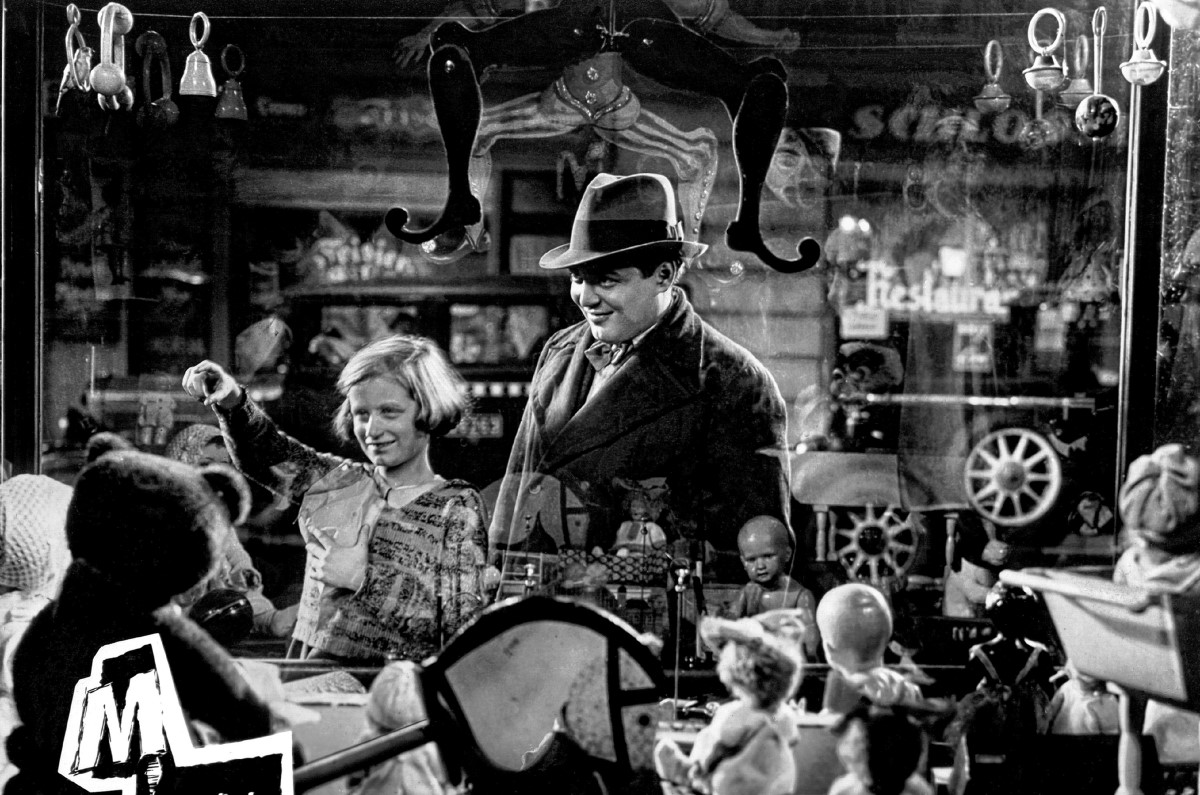In Dusseldorf, a shadow of terror looms as an elusive child murderer roams free. This enigmatic killer preys on young girls, remaining out of the grasp of law enforcement. The resulting citywide panic disrupts the lives of local thieves, vagrants, and criminals, who decide to take matters into their own hands. A young criminal brands the murderer with an “M,” setting the stage for a nocturnal manhunt and a makeshift trial…
Fritz Lang‘s genius is evident from the opening scenes. A bird’s-eye view of children playing, a crane shot moving into a single mother’s humble home. The eerie cuckoo clock marks the end of school. A mother sets the table for two. A girl plays with a ball, a man’s shadow looming over her. Other children return home, but she doesn’t. She’s on the street, receiving a balloon from a blind vendor. Her mother’s calls echo through empty spaces—the stairwell, the basement. Then, a ball rolls out from a bush, a balloon caught in power lines. The film’s hallucinatory realism, born from New Objectivity, fuses with the legacy of Expressionism. A mundane rhythm, never before so suspenseful, reveals a world both modest and desolate, captured through a relentless yet compassionate lens.
The first German feature film with sound had been released a year before this movie’s production: Lang ventured into the world of sound cinema, bringing with him the full mastery of visual storytelling honed during the silent film era. The whistled “Peer Gynt” leitmotif by the murderer, the use of sound effects without extradiegetic music, impressively exploit audio potential, while the editing enhances previous cinema techniques: intercutting scenes of criminals and police, images overlaying a minister’s speech, providing an immediate, comprehensive view. Individual stories seem to emerge from everyday objects and dark corners of a grim, unspecific metropolis—total realism that suddenly becomes a mental space in studio shots. In this film, where style is everything, even the plot’s originality becomes secondary: the murderer’s face is revealed early (the astonishing, then-unknown Peter Lorre); the last 45 minutes focus on his pursuit by both police and criminals; we know nothing of his life, traumas, or motives; there’s no main protagonist or detective, just unlikable groups in a literally blind search. Lang isn’t concerned with psychology but the dilemma of evil within man and society. Shot as the Nazi party was rising, the film contrasts Three Penny Opera-esque criminals with Grosz-like bourgeoisie, portraying Weimar’s twilight as a desolate, dangerous land. This vision, devoid of self-indulgence (and in hindsight, alarming), was initially titled Murderer Among Us.
Film Tv, No. 2, January 9, 2024





